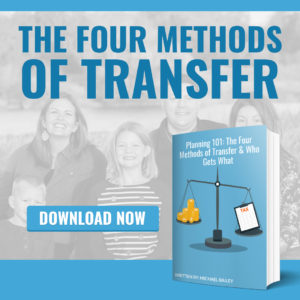
In the early 1990’s I used to watch TV on Friday nights, when ABC had it’s TGIF lineup. One of the shows that aired was called “Step by Step” and the show was about a blended family – a family where the spouses have remarried and kids are not all from just the married couple. The show followed the adventures, and misadventures, of combining two families. It seemed almost like an update of the 1970’s TV show “The Brady Bunch,” but with less 1970’s life lessons and more of the 1990’s life lessons – at least as taught by a TV show. Certainly there were challenges and difficulties invented for television, which might be easy to avoid in real life, but that is how TV shows work. In real life, when two people remarry or create a blended family with children from previous marriages, real life problems arise – not made for TV problems.
One of these real life problems is what to do with assets each party brings into the new marriage. Assets accumulated prior to a second marriage may be brought into your new marriage, but offspring from a previous relationship or marriage may feel like those assets should go to them, and not to a new spouse. This is especially true if the offspring are the adult children of individuals who remarry later in life. You want to protect your children, but also want to protect your spouse. Protecting your assets is a big part of protecting your children and your spouse.
A blended family has unique needs for estate planning. Blended families need to determine which assets are supposed to go to a new spouse, which assets go to children, and whose children. There are Colorado statutes that dictate how much a surviving spouse should receive, so planning for, or around, those statutes is an important part of an estate plan for a blended family. You want to make sure your spouse is protected.
You also want to treat your children fairly, and ideally you should start planning for a second marriage, or a blended family, before your second marriage, but you can always plan after your second marriage has taken place. You want to decide how to protect your assets, protect your children, and how to protect your spouse, so that everyone is treated fairly.
Who Gets What in a Blended Family?

Deciding who gets assets in an estate plan is never easy, but with a new spouse, and children from other relationships, dividing assets can be even trickier. Children from one marriage may not be fond of the new spouse, or may not know the new spouse all that well. This may create friction between a new spouse and children from a previous marriage. I am not saying that a new spouse would be an “evil step-parent” like in a Disney cartoon, but certainly children raised by a different parent for a large portion of the child’s life may not view the new spouse the same.
Asset Allocation
In such cases, the children from a previous marriage will likely feel that assets accumulated during a previous marriage should belong to the children from that marriage, and not a new spouse. A new spouse may not see things that way, or the new marriage partner may want to provide for a new spouse without endangering the inheritance going to the children eventually. These are not mutually exclusive goals. By using proper planning, oftentimes including separate trusts for new marriage partners, both of these goals can be accomplished. Assets can remain in trust for the use of a new spouse and eventually be distributed to the children you decide should receive the assets, whether that be children from a previous marriage, children from a second marriage, or someone else completely.
By planning your estate properly, both your new spouse and children from a previous marriage can be treated fairly and equally.
Plan for Your Children
 Your children may, or may not, be happy about you finding a new spouse. With any luck, your chilidren can be friends with the new spouse, but that may not always be the case. If your children are not friends with the new spouse, do not get along, or have suspicions about a new spouse, then the children may feel that a new spouse may be taking assets from them. Unless you don’t like your children or your new spouse, you want to protect all of them. As mentioned above, you can set up a trust to preserve assets and protect the assets from being given to someone the new spouse wants, leaving your children high and dry. You can set up your estate plan to account for a new spouse, and also to protect the children.
Your children may, or may not, be happy about you finding a new spouse. With any luck, your chilidren can be friends with the new spouse, but that may not always be the case. If your children are not friends with the new spouse, do not get along, or have suspicions about a new spouse, then the children may feel that a new spouse may be taking assets from them. Unless you don’t like your children or your new spouse, you want to protect all of them. As mentioned above, you can set up a trust to preserve assets and protect the assets from being given to someone the new spouse wants, leaving your children high and dry. You can set up your estate plan to account for a new spouse, and also to protect the children.
One way to protect your children, especially if they are adult children, is to use an adult child as a co-trustee on a trust that holds assets for the use of a new spouse. Having an adult child from your first marriage as a co-trustee would allow the adult child to check up on the new spouse and keep tabs on what the new spouse is doing with money in the trust. That way, the new spouse can use the assets, but the adult children from a previous marriage can see that the new spouse is not using up assets improperly. Of course, you don’t want to limit your new spouse too much, and you likely do not want to turn over all power to your children, but you want them to work together. By carefully structuring who has access to trust funds or assets, you can protect both your children and your new spouse.
Protecting Your Spouse
There are statutes that protect a spouse from being completely disinherited, meaning one spouse is not able to completely cut off a surviving spouse from receiving an inheritance. In Colorado, spousal protection statutes provide that a spouse has been married for 1 year is able to claim 5% of a deceased spouse’s estate, married for 2 years can claim 10%, and so on, up to 10 years (or more) of marriage being able to claim 50% of a deceased spouse’s estate. As with any statute, this is the default rule, and can be modified. A married couple may decide that a new spouse does not need to claim 50% of the other’s assets, if a spouse dies. Instead, the married couple can decide that a new spouse may have enough assets to live on without any assets; or may use some assets and pass the remaining along to children from a previous marriage; or may choose some other way to split assets.
When varying from the default rule, married couples should execute a waiver of claims against the estate. These waivers need to contain some, but not all, of the same provisions as a marital agreement, like a prenuptial or postnuptial agreement, but don’t need to contain all of the provisions concerning what will happen to assets in a divorce. So, they end up being a shorter document, for the limited purpose of stating that spouses do not want to be bound by the default rule. Instead the spouses wish to modify the rule to suit their needs.
I call such a waiver a “marital agreement lite,” but that is not an exact legal term. I just mean that the spouses are agreeing to asset distribution at the death of one spouse, without asserting other legal spousal rights to an estate.
Of course, you can also set up a full premarital agreement before a second marriage, you just want to make sure the premarital agreement covers what will happen when a spouse dies. Agreeing before a death helps avoid fights and litigation after death.
Protect Your Entire Family

Several of the strategies described in the blog involve using a trust to protect your assets, your children, and your spouse. Not everyone needs a trust, even in a second marriage. You may be able to accomplish your goals and objectives using a will, or a trust may work for you. Only by having a conversation with an experienced estate planning attorney can you determine what is the right approach for you. To schedule an appointment with an estate planning attorney and discuss your options, click here.

 720-730-7274
720-730-7274









